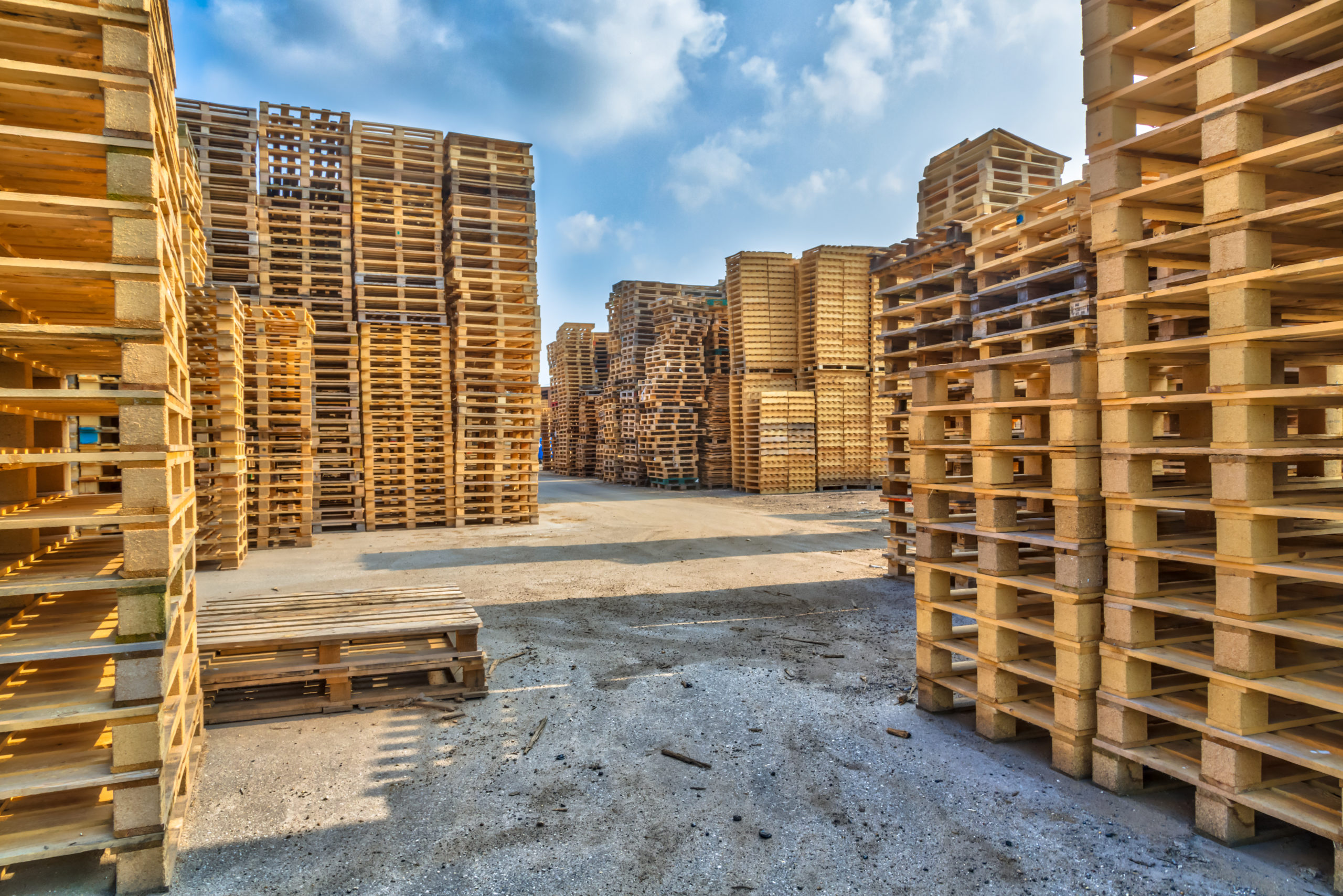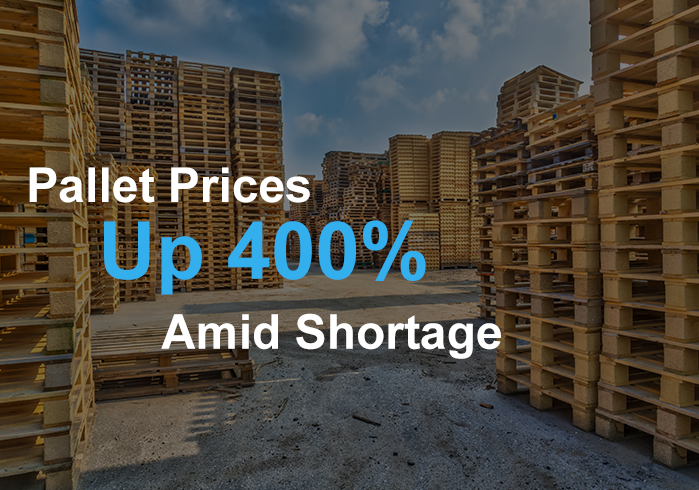
There is a pallet supply criss according to a report by the United Fresh Produce Association. Given the various uses of pallets, this shortage is bound to affect many industries directly and indirectly. For example, the lack of pallets has a tremendous effect on the supply chain for many companies. This is in addition to the stress that supply chains are already facing following the COVID-19 pandemic and the lockdown measures put in place to encourage social distancing. This article discusses the implications and possibilities of responding to the crisis.
Dealing with ridiculously expensive lumbar
Some of the ongoing issues that are worsened by pallet shortages include the lack of shipping containers, trucks, and staff. Indeed, there is a rising shortage of resin which is a key ingredient for making recycled containers and pallets. It is anticipated that the pallet shortages will go on for a few months and possibly right to the end of 2021. A year that is already difficult and unpredictable could get worse due to these shortages.
Consequently, the cost of raw lumber has doubled and sometimes nearly quadrupled. Lumber price increments have exponential impacts on the cost of manufacturing wood pallets. Manufacturers are passing on these costs by way of increased asking prices. This in turn destabilizes businesses that are only trying to regain their footing after long closures.
If pallets are available, a buyer can expect to pay 400% more. This is not sustainable in the long run. Consumer demand is rising, and pallets are a key ingredient in meeting those demands. Without addressing the pallet shortage crisis, it will be impossible to satisfy consumer demand.
Why is lumber currently so expensive?
It is worthwhile to consider how we got to this situation. One of the critical determinants of pallet consumption is home construction, a dynamic that was on the rise in the years preceding the COVID-19 pandemic. Homebuilding drives up the price of lumber.
The fact that lumber is an entirely fungible good means that it impacts virtually every economy on the globe. During the pandemic, many people decided to complete pending house repairs and that places additional demand on lumber. The social distancing regulations in the COVID-19 era have increased the demand for social spaces that are specifically outdoors in their construction. This calls for furniture and property modifications that consume lumber.
As economies begin to open, businesses are trying to reactivate their supply chains to meet considerable demand. Lumber and pallets will inevitably be part of that equation. This is especially true given the disruptions that the COVID-19 pandemic has had on traditional supply chain systems. These are the same supply chains that must service an unexpectedly high demand for consumables and protective equipment.
There may be some level of inefficiency that increases the demand for lumber. In addition, there are other regular shortages of battery materials and steel. These are cyclical patterns that are not causally linked to the pandemic. However, the impact on the supply chain emphasizes the limited infrastructural capacity to meet the high demand in the post-COVID19 era.
What can you do about the expensive lumber?
There are several options for responding to the lumber shortages that we are seeing. We have identified nine strategies that might be of use regardless of whether you are a DIY builder or someone concerned about their supply chain.
The first strategy involves using reclaimed lumber
One option is to make use of reclaimed lumber. It is relatively cheap and good for the environment. The source of reclaimed lumber includes old buildings and under-used furniture.
The second strategy involves using wooden pallets
Using wooden pallets makes sense during this shortage. Some recyclers have stayed away from pallets because they are made of a combination of soft and hardwood which makes them difficult to recycle. Companies sometimes want to get rid of these pallets and will willingly hand them over to someone who needs them for their DIY or any other purpose.
The third strategy involves considering alternative materials
You may consider using alternative materials. Although not necessarily saving much money, the use of alternative materials is an ideological choice that reflects environment-friendly values. This may involve
reframing the project entirely to use new materials such as concrete blocks.
The fourth strategy involves avoiding wastage of lumber
You should generally avoid wasting lumber during times of scarcity. Cut out what you need and do not create room for bits to be thrown away. Get as close to the whole cut as possible when stocking. This involves careful calculation and informed estimates where a local dealer can help you.
Expert insights
The United Fresh Produce Association calls for efficiency drives such as repositioning pallets to make better use of space and the palettes themselves. Such action may require the cooperation of drivers on their trucks. It is not always clear that such cooperation is forthcoming. The response should be in building and strengthening relationships in the supply chain.
The Bureau of Labor Statistics Producer Price Index anticipates an ongoing shortage and price increase. That means that the interventions described above are here to stay in the long run. A more efficient supply chain and fulfillment process may mean that you can reuse pallets in a way that does not put strains on your business. Brambles, which owns CHEP, suggests that elevated demand could be a problem and the solution is finding a way of developing better relationships in the supply chain.
These are relationships that are frayed at the seams following an extended hiatus during the lockdown. Brent McClendon of the National Wooden Pallet & Container Association sees the solution in partnerships throughout the supply chain. This is particularly true given the fact that the pandemic has disrupted demand and logistics patterns. Data from DAT indicates that the pallets may be present, but not in the right place, hence necessitating better coordination. All industries that are affected by the palette shortage need to engage in a coordinated response, rather than acting alone and in an overtly selfish manner.
Wrapping up
The shortage of pallets has affected the price and availability of lumber. This is a critical material that has the potential to affect the entire supply chain. At a time when consumer demand is rising following the COVID-19 pandemic, it is imperative for businesses and other users of pallets or lumber to think of alternative strategies. These may include more efficiency, recycling, and even using other materials instead of lumber. At the same time, supply chains must be better organized to deal with the reality of scarcity in key materials. Otherwise, the market will not be able to deliver goods to the right people at the right time.



